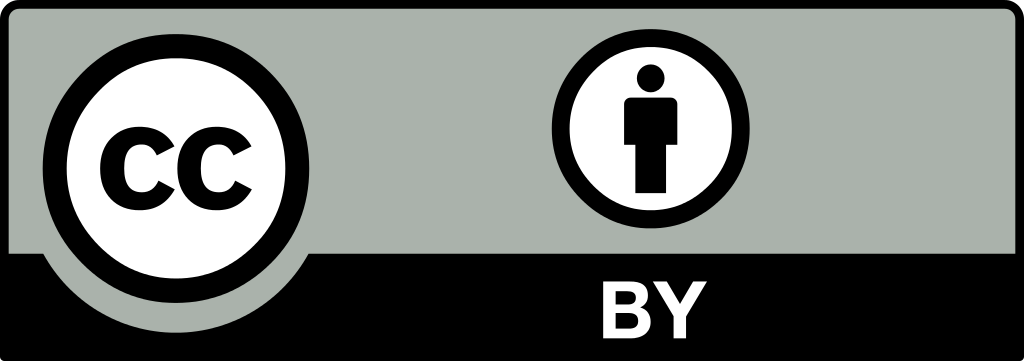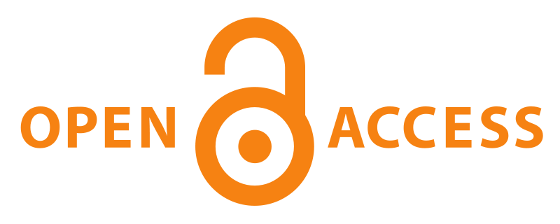Öz
Ters yüz edilmiş
sınıflar, teknoloji ve zamanın daha yenilikçi kullanımıyla öğrencilerin ve
öğretmenlerin geleneksel olarak ders içeriğini öğrenme ve öğretme şeklini
değiştiren bir öğretim yöntemidir. Ters yüz edilmiş sınıflar, eğitimcilerin ve
eğitiö kurumlarının şimdi ve gelecekte karşılaşabilecekleri sorunlara bir çözüm
olabilir. Bu makalede, finans alanındaki akademisyenlerin kendi sınıflarında
ters yüz edilmiş sınıf yaklaşımını nasıl uyguladıklarına ilişkin bir literatür
taraması sunmaktayız. Avustralya, La Trobe Üniversitesi Kütüphanesi üzerinden
ProQuest, JSTOR, ScinceDirect ve WEB Veri Tabanı veritabanlarında anahtar
kelimeler olarak ters yüz edilmiş sınıf, finans eğitimi ve ters yüz edilmiş
derslerin uygulamalarını kullandık. Bu kriterler ile ilgili toplamda 163 makale
bulduk. Tüm makaleleri değerlendirdiğimizde, makalelerin çoğunun hukuk,
matematik ve dil gibi farklı sınıf uygulamaları alanında olduğunu, ancak finans
eğitimi alanında çok az uygulamanın olduğunu fark ettik. Sonuçlar, ters yüz
edilmiş sınıf ve finans eğitimi ile ilgili çok dolaylı kanıtların olduğunu
göstermektedir. Sadece 10 makale ters yüz edilmiş sınıf kriterlerini ve finans
eğitimindeki eğitim çıktılarını karşılamaktadır. Yapılan çalışmaların çoğunluğu
örenci algıları ve akademik sonuçların nasıl iyileştirileceği ile ilgilidir.
Ayrıca vaka çalışmalarının keşfetmediği bazı alanları da tespit ediyoruz. Bunu
yaparken, finans eğitiminde ters yüz edilmiş sınıflar ve bunun finans sektörü
üzerindeki etkileri hakkında gelecekteki araştırmalar için kapsamlı bir temel
sağlamayı hedefliyoruz.
Anahtar Kelimeler
Destekleyen Kurum
Atatürk Üniversitesi Bilimsel Araştırma Projeleri Koordinasyon Birimi
Proje Numarası
SCD-2019-6878
Kaynakça
- Albanese, M. A. (1993). Problem based Learning: a review of Literature on its Outcomes and Implementation Issues. ,
- Bergfjord, O. J., & Heggernes, T. (2016). Evaluation of a “Flipped Classroom” Approach in Management Education. Journal of University Teaching & Learning Practice, 1 – 13.
- Bergman, J., Sams., P. (2012). Flip Your Classroom: Reach Every Student in Every Class, Every Day. Alexandria, VA: International Society for Technology in Education.
- Butt, A. (2014). STUDENT VIEWS ON THE USE OF A FLIPPED. BUSINESS EDUCATION & ACCREDITATION, 33-43.
- Devadoss, S., Foltz., J. (1996). Evaluation of Factors Influencing Student Class Attendance and Performance. American Journal of Agricultural Economics, 1996, Vol. 78(3), pp.499-507.
- Duxbury, T., Gainor, M., & Trifts, J. (2016). Increasing Active Learning in Accounting and Finance by Flipping the Classroom. Journal of the Academy of Business Education, 35-51.
- Garrison, D. R., Kanuka, H (2004). Blended Learning: Uncovering its Transformative Potential in Higher Education. The Internet and Higher Education, 7, p95-105.
- Gbadamosi, G (2013). Should we Bother Inproving Students’ Attendance at Seminars? Innovations in Education and Teaching International, 52:2, pp196-206.
- Harden, R.M. (2002). Developments in outcome-based education. Medical Teacher, 24:2, pp 117-120.
- Hew, K. F., Cheung. W. S. (2014). International Society for Technology in Education. Singapore: Springer.
- Hmelo-Silver, C.E. (2004). Problem-Based Learning and How do Students Learn? Educational Psychology Review,16:3, pp235-266.
- Hsieh, B. (2016). Step by Step, Slowly I Flip. In Santos-Green, L., Banas, J. Perkins, R., Perkins. R. A. (eds). The Flipped College Classroom: Conceptualised and Reconceptualised. Cham: Springer
- Karen Hallows. (2015). MyFinanceLab. In K. Hallows, Flipped Learning Implementation Strategies for High Impact (pp. 13 -17). PEARSON.
- Kidd, T. E., Morris, L. R. (2017). Handbook of Research on Instructional Systems and Educational Technology. Hershey, PA: IGI Global.
- Kokkelenberg, E.C., Dillon, M., Christy, S. M. (2008). The Effects of Class Size on Student Grades at a Public University. Economics of Education Review,27:2, pp221-233.
- Lento, C. (2016). Promoting active learning in introductory financial accounting through the flipped classroom design. Journal of Applied Research in Higher Education, 72-87.
- Lopes, A. P., & Soares, F. (2016). FLIPPING A FINANCIAL MATHEMATICS COURSE IN A HIGHER EDUCATION INSTITUTION (HEI). Proceedings of ICERI2016 Conference 14th-16th November 2016, Seville, Spain DOI: 10.21125/iceri.2016.1860, 3634 - 3641.
- Lubbe, E. (2016). INNOVATIVE TEACHING IN ACCOUNTING SUBJECTS: ANALYSIS OF THE FLIPPED CLASSROOM. INTERNATIONAL JOURNAL OF SOCIAL SCIENCES AND HUMANITY STUDIES, 63-74.
- Massinghamand P. and Herrington T. (2006). Does Attendance Matter ? An Examination of Student Attitudes, Participation, Performance and Attendance? Journal of University Teaching and Learning Practice – Vol 3/2, 2006.
- Mu, H., & Paparas, D. (2016). Ready for the flipped classroom? Preliminary Experiences of The New Approach In Teaching Economics to Non-Major Students. Applied Economics and Finance, 45-53.
- OECD, (2014). https://read.oecd-ilibrary.org/finance-and-investment/financial-education-for-youth/the-importance-of-financial-education-for-youth_9789264174825-3-en#page1.
- Osman, S. Z., Jamaludin, R., & Mokhtar, N. E. (2014). Flipped Classroom and Traditional Classroom: Lecturer and Student Perceptions between Two Learning Cultures, a Case Study at Malaysian Polytechnic. International Education Research, 16-25.
- Reidsema, C., Hadgraft, R., Kavanagh, L. (2017). Introduction to the Flipped Classroom.
- Reidsema, C. (2016). The Flipped Classroom: Practice and Practices in Higher Education. Singapore: Springer.
- Rovai, A.P., Jordan, H. (2004). Blended Learning and Sense of Community: A Comparative Analysis with Traditional and Fully Online Graduate Courses. International Review of Research in Open and Distance Learning, 5:2, pp1-13.
- Thompson, S. F., & Mombourquette, P. (2014). Evaluation of a Flipped Classroom in an Undergraduate Business Course. Business Education & Accreditation, 63-71.
- Schwartz, P., Mennin, S., Webb, G. (2013). Problem-Based Learning. London: Taylor and Francis.
- Sharma, P. (2010). Blended Learning. ELT Journal, 64:4, pp.456-458.
- Skilbeck, M., Hager, p., Holland, S. (2006). Graduate Attributes, Learning and Employability. Dordrecht: Springer Netherlands.
- Westrick, S. C., Helms, K. L., McDonough, S. K., Breland, M. L. (2009). Factors Influencing Pharmacy Students’ Attendence Decisions in Large Lectures. American Journal of Pharmaceutical Education. 73:5 pp. 1-9.
- Zhao, Y., Deng, X., & Zhai, S. (2016). The Analysis of Flipped Classroom Mode of CIMA Financial Operation Course. 6th International Conference on Electronic, Mechanical, Information and Management (EMIM 2016), 1365-1369.
- The Conference Board, Corporate Voices for Working Families, the Partnership for 20th Century Skills and the Society for Human Resources Management (2006). Are they Really Ready to Work? Employers’ Perspectives on the Basic Knowledge and Applied Skills of New Entrants to the 21st Century U.S Workforce. Retrieved 29-1-2018, from https://www.conference-board.org/publications/publicationdetail.cfm?publicationid=1218
Öz
Flipped
classrooms are a teaching method which changes the way students and teachers
have traditionally learnt and taught course content, through technology and
more innovative use of time. Flipped classes can be a solution to the issues
that universities face presently and into the future. In this article, we
provide a review of literature on how academics in finance have applied the
flipped classroom approach in their classes. We used key words of flipped
classroom, finance education and application of flipped classrooms in finance
education in the database of ProQuest, JSTOR, ScinceDirect and WEB of SCIENCE
via La Trobe University Library, Australia. We found 163 articles related to
these criteria. When we evaluated all articles we realized that most of the
articles were in the area of several flipped classroom applications such as law,
mathematics, and language, but not finance education. The results show that
there is much indirect evidence of flipped classroom and finance education.
Only 10 articles meet the criteria of the flipped classroom and educational
outcomes in finance education. We identify common themes in research purposes
and results – student perceptions on learning and how to improve academic
outcomes. We also identify some areas which the case studies have not explored.
In doing so, we aim to provide a comprehensive basis for future research into
flipped classrooms in finance education and its implications for the finance
industry.
Anahtar Kelimeler
Proje Numarası
SCD-2019-6878
Kaynakça
- Albanese, M. A. (1993). Problem based Learning: a review of Literature on its Outcomes and Implementation Issues. ,
- Bergfjord, O. J., & Heggernes, T. (2016). Evaluation of a “Flipped Classroom” Approach in Management Education. Journal of University Teaching & Learning Practice, 1 – 13.
- Bergman, J., Sams., P. (2012). Flip Your Classroom: Reach Every Student in Every Class, Every Day. Alexandria, VA: International Society for Technology in Education.
- Butt, A. (2014). STUDENT VIEWS ON THE USE OF A FLIPPED. BUSINESS EDUCATION & ACCREDITATION, 33-43.
- Devadoss, S., Foltz., J. (1996). Evaluation of Factors Influencing Student Class Attendance and Performance. American Journal of Agricultural Economics, 1996, Vol. 78(3), pp.499-507.
- Duxbury, T., Gainor, M., & Trifts, J. (2016). Increasing Active Learning in Accounting and Finance by Flipping the Classroom. Journal of the Academy of Business Education, 35-51.
- Garrison, D. R., Kanuka, H (2004). Blended Learning: Uncovering its Transformative Potential in Higher Education. The Internet and Higher Education, 7, p95-105.
- Gbadamosi, G (2013). Should we Bother Inproving Students’ Attendance at Seminars? Innovations in Education and Teaching International, 52:2, pp196-206.
- Harden, R.M. (2002). Developments in outcome-based education. Medical Teacher, 24:2, pp 117-120.
- Hew, K. F., Cheung. W. S. (2014). International Society for Technology in Education. Singapore: Springer.
- Hmelo-Silver, C.E. (2004). Problem-Based Learning and How do Students Learn? Educational Psychology Review,16:3, pp235-266.
- Hsieh, B. (2016). Step by Step, Slowly I Flip. In Santos-Green, L., Banas, J. Perkins, R., Perkins. R. A. (eds). The Flipped College Classroom: Conceptualised and Reconceptualised. Cham: Springer
- Karen Hallows. (2015). MyFinanceLab. In K. Hallows, Flipped Learning Implementation Strategies for High Impact (pp. 13 -17). PEARSON.
- Kidd, T. E., Morris, L. R. (2017). Handbook of Research on Instructional Systems and Educational Technology. Hershey, PA: IGI Global.
- Kokkelenberg, E.C., Dillon, M., Christy, S. M. (2008). The Effects of Class Size on Student Grades at a Public University. Economics of Education Review,27:2, pp221-233.
- Lento, C. (2016). Promoting active learning in introductory financial accounting through the flipped classroom design. Journal of Applied Research in Higher Education, 72-87.
- Lopes, A. P., & Soares, F. (2016). FLIPPING A FINANCIAL MATHEMATICS COURSE IN A HIGHER EDUCATION INSTITUTION (HEI). Proceedings of ICERI2016 Conference 14th-16th November 2016, Seville, Spain DOI: 10.21125/iceri.2016.1860, 3634 - 3641.
- Lubbe, E. (2016). INNOVATIVE TEACHING IN ACCOUNTING SUBJECTS: ANALYSIS OF THE FLIPPED CLASSROOM. INTERNATIONAL JOURNAL OF SOCIAL SCIENCES AND HUMANITY STUDIES, 63-74.
- Massinghamand P. and Herrington T. (2006). Does Attendance Matter ? An Examination of Student Attitudes, Participation, Performance and Attendance? Journal of University Teaching and Learning Practice – Vol 3/2, 2006.
- Mu, H., & Paparas, D. (2016). Ready for the flipped classroom? Preliminary Experiences of The New Approach In Teaching Economics to Non-Major Students. Applied Economics and Finance, 45-53.
- OECD, (2014). https://read.oecd-ilibrary.org/finance-and-investment/financial-education-for-youth/the-importance-of-financial-education-for-youth_9789264174825-3-en#page1.
- Osman, S. Z., Jamaludin, R., & Mokhtar, N. E. (2014). Flipped Classroom and Traditional Classroom: Lecturer and Student Perceptions between Two Learning Cultures, a Case Study at Malaysian Polytechnic. International Education Research, 16-25.
- Reidsema, C., Hadgraft, R., Kavanagh, L. (2017). Introduction to the Flipped Classroom.
- Reidsema, C. (2016). The Flipped Classroom: Practice and Practices in Higher Education. Singapore: Springer.
- Rovai, A.P., Jordan, H. (2004). Blended Learning and Sense of Community: A Comparative Analysis with Traditional and Fully Online Graduate Courses. International Review of Research in Open and Distance Learning, 5:2, pp1-13.
- Thompson, S. F., & Mombourquette, P. (2014). Evaluation of a Flipped Classroom in an Undergraduate Business Course. Business Education & Accreditation, 63-71.
- Schwartz, P., Mennin, S., Webb, G. (2013). Problem-Based Learning. London: Taylor and Francis.
- Sharma, P. (2010). Blended Learning. ELT Journal, 64:4, pp.456-458.
- Skilbeck, M., Hager, p., Holland, S. (2006). Graduate Attributes, Learning and Employability. Dordrecht: Springer Netherlands.
- Westrick, S. C., Helms, K. L., McDonough, S. K., Breland, M. L. (2009). Factors Influencing Pharmacy Students’ Attendence Decisions in Large Lectures. American Journal of Pharmaceutical Education. 73:5 pp. 1-9.
- Zhao, Y., Deng, X., & Zhai, S. (2016). The Analysis of Flipped Classroom Mode of CIMA Financial Operation Course. 6th International Conference on Electronic, Mechanical, Information and Management (EMIM 2016), 1365-1369.
- The Conference Board, Corporate Voices for Working Families, the Partnership for 20th Century Skills and the Society for Human Resources Management (2006). Are they Really Ready to Work? Employers’ Perspectives on the Basic Knowledge and Applied Skills of New Entrants to the 21st Century U.S Workforce. Retrieved 29-1-2018, from https://www.conference-board.org/publications/publicationdetail.cfm?publicationid=1218
Ayrıntılar
| Birincil Dil | İngilizce |
|---|---|
| Bölüm | Makaleler |
| Yazarlar | |
| Proje Numarası | SCD-2019-6878 |
| Yayımlanma Tarihi | 25 Ekim 2019 |
| Yayımlandığı Sayı | Yıl 2019 |




